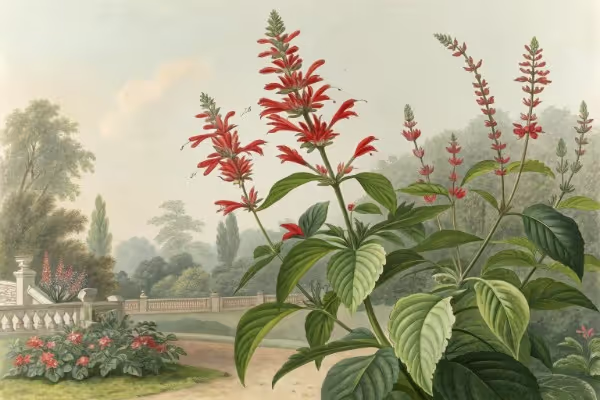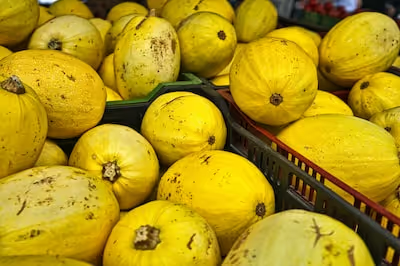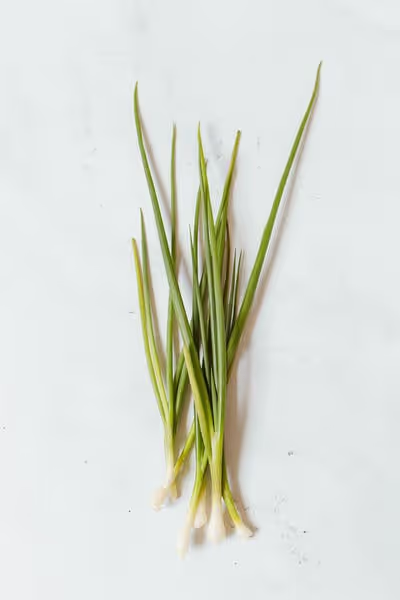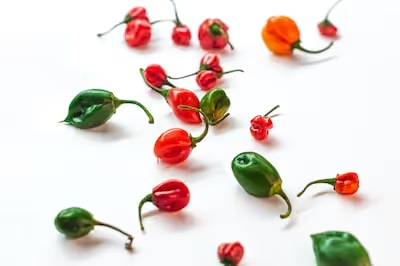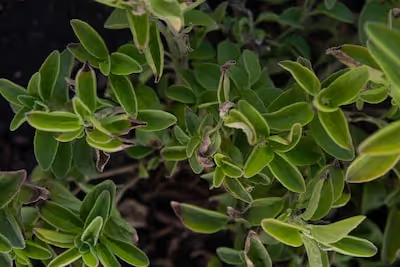Growing Nopal: How to Grow Healthy Cacti in Your Garden
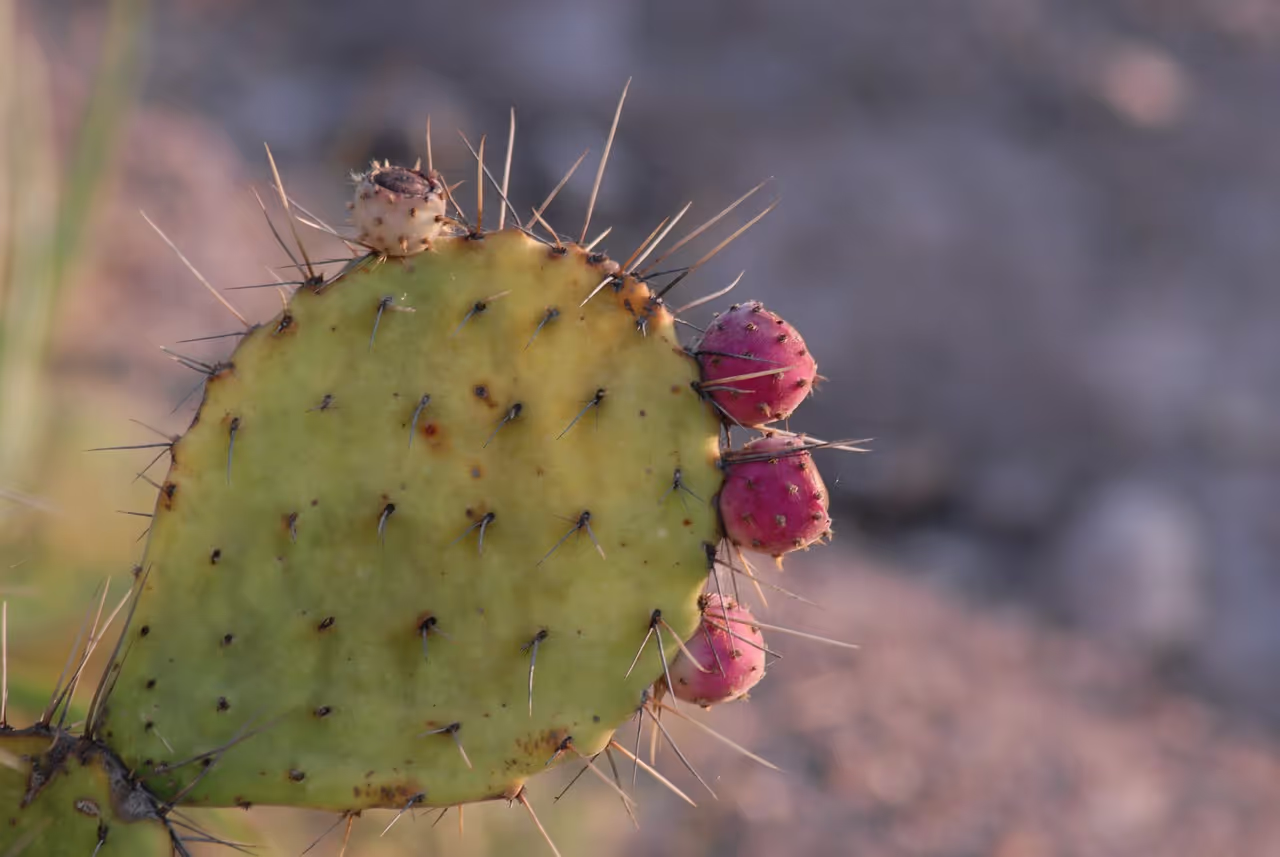
Growing Nopal
Growing nopal rewards gardeners who savor sun-drenched simplicity. Start by planting nopal pads, known as cladodes, in gritty, well-draining soil with full sun exposure. Water sparingly—this cactus thrives on neglect—and watch it flourish into an edible, versatile staple you'll want to keep around your kitchen table. Here's your straightforward guide to thriving with growing nopal.
Cheatsheet: Nopal Cactus for Home Edible Gardens
🌞 Sun & Site
Full sun (>6 hours). Well-drained sandy or rocky soil. pH 6–7.5.
💧 Watering
Water every 2–3 weeks in summer; once monthly in winter. Avoid soggy roots.
🌵 Propagation
- Cut healthy pads (8–12 in/20–30 cm).
- Itemprop="step" Allow pads to dry 7 days before planting.
- Plant 1–2 in (2.5–5 cm) deep, upright; space 24 in (60 cm) apart.
- Roots form in 3–6 weeks.
🌱 Feeding
Use low-nitrogen cactus fertilizer once in spring. No heavy feeding.
🔪 Pruning & Harvest
- Wear gloves.
- Harvest young pads <8 in (<20 cm), morning.
- Trim spines; rinse.
- Cut 2x yearly for best yield.
🛠️ Tools and Products You’ll Need
- Pruning shears
- Thick gloves
- Shovel or trowel
- Cactus soil mix/gritty sand
- Fertilizer (low NPK)
- Watering can
🍽️ Health & Nutrition
Rich in fiber, vitamin C, calcium, magnesium. May lower blood sugar. 80% water; 25 calories per cup.
🛡️ Pests & Problems
Watch for cochineal scale (white fuzz), rot. Remove affected pads. Avoid overhead watering.
-
Growing Nopal: How to Grow Healthy Cacti in Your Garden
Growing Nopal grabbed me the first time a paddle sizzled on my cast-iron and perfumed the kitchen like green beans kissed by rain. I learned quickly that nopal laughs at neglect but punishes soggy soil and timid pruning.
Meet the plant: tough, edible, stunning
Nopal is Opuntia, a paddle cactus with edible pads and fruit that feeds households and bees with equal generosity. The flowers light up spring, then turn into tunas in shades of ruby, gold, or lime.
I plant it for food, drought resilience, and architecture. The pads store water, the roots like air, and the whole plant thrives where sprinklers burn cash.
Climate and exposure
Give full sun for at least 6 hours daily, with light afternoon shade for new pads during heat spikes above 100 F or 38 C. Many species handle 20 F or minus 6 C, while cold-hardy kinds like Opuntia humifusa shrug off minus 20 F or minus 29 C once established.
Dry air suits it. Humidity and rain demand sharper drainage and a stingy watering hand.
Soil and drainage that actually works
I use a gritty mix that sheds water fast: 50 percent mineral aggregate such as pumice or 3 to 6 mm gravel, 30 percent coarse sand, 20 percent composted bark. Aim for pH 6.1 to 7.8.
Do a drainage test before planting. A 30 cm deep hole should drain within 60 minutes after a soak, or I raise the bed 20 to 30 cm and add more mineral.
Propagation: pads or seed
- Choose a firm, disease-free pad in late spring. Detach with a clean, alcohol-wiped blade at the joint and let it callus 7 to 14 days in bright shade.
- Plant the pad upright, burying 2.5 to 5 cm of the base in dry medium. First drink after day 10, then every 10 to 14 days until roots anchor.
- Seed works too, though slow. Scarify lightly with sandpaper, sow shallow, keep 24 to 29 C and barely moist.
I space plants 0.9 to 1.8 m apart depending on species vigor. Crowding traps humidity and invites rot.
Watering that keeps pads crisp, not bloated
After establishment, I water deeply every 21 to 28 days in summer if rainfall stays under 12 mm. In clay soil I halve the frequency and water before dawn for cleaner evaporation.
In containers I use 1 to 2 liters per 30 cm pot and let the mix dry fully between drinks. Winter water only during extended drought and above 45 F or 7 C.
Feeding without fattening
Nopal stores energy like a camel, so go light. A spring sprinkle of low nitrogen fertilizer, say 5-10-10, at half rate works, or a small handful of mature compost scratched in.
Too much nitrogen makes flabby pads that sunburn and split. I want dense flesh and tight cuticles for better flavor and shelf life.
Planting day checklist
- Choose a south-facing spot with reflected heat from rock or gravel.
- Set the pad or start slightly proud of grade to avoid collar rot.
- Mulch with 2 to 4 cm of pea gravel, not wood chips, to warm the root zone and shed water.
- Stake tall starts with bamboo for one season in windy sites.
Cold, heat, and weather hacks
For a surprise freeze near 28 F or minus 2 C, I wrap the plant with frost cloth and keep it bone dry. In heat domes above 108 F or 42 C, I outfit young plants with a 30 percent shade cloth for two weeks.
Sunscald scars look like pale, corky patches. The plant survives, but I tune exposure for future growth.
Pruning like you mean it
I prune in warm, dry weather with long tongs, eye protection, and leather or nitrile-coated gloves. Remove crowded inner pads to boost airflow and light penetration.
Cut clean at the joint and hold each pad upright so slime stays inside. I sanitize between plants with isopropyl alcohol to avoid moving cochineal or fungi.
Glochids and spines: safety first
Glochids are the tiny hairlike barbs that make grown adults invent new words. I use tongs, a stiff brush, and tape to lift them, then a rinse.
For kitchen prep, I pass the pad quickly over a gas flame or scrape under running water before dicing. The less handling, the better.
Harvest for flavor and yield
Pick young pads when they hit 10 to 20 cm and feel firm, usually spring through early summer. Older pads get stringy and shed more mucilage in the pan.
Fruit ripens late summer. Ripe tunas pull free with a twist and show saturated color and slight give.
Varieties I trust for Growing Nopal
- Opuntia ficus-indica Bianca or Reina: large, mild pads and heavy fruit set for jam and fresh eating.
- O. ficus-indica Burbank Spineless: fewer long spines, though glochids still appear, so treat like a cactus with attitude.
- Opuntia robusta: big blue pads, great for hedges and grilling, needs space.
- Opuntia humifusa: cold-hardy ground clumper for zones as low as 4, smaller pads with bright flavor.
Ask vendors about fruit color, pad tenderness, and local performance. I buy from certified cactus nurseries or extension plant sales to avoid mislabeled stock.
Containers and small-space setups
Use an unglazed 30 to 45 cm pot with large drainage holes and a saucer-free stance. Mix 60 percent mineral aggregate with cactus mix for a lean, fast-drying blend.
Rotate the pot quarterly for even light and stack a paving stone under it to keep the base dry. Repot every 2 to 3 years before the media collapses.
Pests, diseases, and quick fixes
- Cochineal scale looks like white fluff that bleeds crimson when crushed. I blast with a firm hose stream, then use 1 to 2 percent horticultural oil on shaded days.
- Mealybugs and soft scale hide in joints. Prune hard, improve airflow, and spot-treat with isopropyl on a cotton swab.
- Rot and black spots signal overwatering or poor drainage. Lift the plant, cut to healthy tissue, let the wound dry, and replant higher in fresh, mineral-rich mix.
Flowering and fruiting tips
Strong light, lean soil, and a slight winter dry spell set flower buds. Bees and native pollinators handle most pollination, although some varieties fruit heavier with nearby clones.
I thin fruit to reduce weight on young pads. Heavy tunas can peel a pad down like a cheap sticker.
Culinary notes from the grill and pan
For bright flavor, I salt sliced pads for 15 minutes, rinse, then sauté hot until the gel cooks off. Grilled slabs brushed with garlic oil punch above their weight next to carne asada or charred spring onions.
Fruit presses into sorbet, syrup, and agua fresca with a lime backbeat. The seeds mill into a nutty flour that plays well in rustic crackers.
Nutrition and practical stats
One cup raw nopales has roughly 14 kcal, about 3 g fiber, and vitamin C plus magnesium, according to USDA FoodData Central. The mucilage gives body to stews and helps reduce cooking oil use.
FAO calls cactus pear a strategic crop for drylands, supporting food, fodder, and water savings in arid regions (FAO, Cactus pear for drylands, 2017).
On small farms, well-managed plantings can yield 8 to 20 metric tons of fruit per hectare in favorable climates. Home gardens can pull weekly pad harvests from a single mature plant from spring into midsummer.
Water hardware and timing
One 0.5 gph or 2 lph drip emitter per plant for 60 to 90 minutes every 3 to 4 weeks keeps roots honest in sandy soils. In clay, I halve runtime and increase interval.
I avoid sprinklers. Wet pads invite pests and blemishes.
Design and companions
Nopal pairs with lavender, thyme, rosemary, agave, sotol, and native bunchgrasses over gravel mulch. The look feels spare and fierce, and the maintenance stays low.
In edible beds I border nopal with oregano and garlic chives to distract aphids. The flowers draw pollinators that visit squash and tomatillos next.
Buying guide and gear
- Source pads from reputable nurseries with labeled species and fruit color. Inspect for white scale, corking near the base, and mushy joints.
- Gear I never skip: 30 cm stainless tongs, long sleeves, nitrile-coated gloves, a serrated harvest knife, and a stiff nylon brush.
- For soil, I favor pumice over perlite in hot regions since it stays put. Coarse granite grit or expanded clay also shine.
Seasonal calendar for Growing Nopal
- Late winter: keep dry, prune lightly, stage stakes and gravel.
- Spring: plant pads, feed lightly, harvest new pads, watch for cochineal.
- Summer: water deeply but rarely, thin fruit, provide brief shade for tender growth during heat bursts.
- Autumn: harvest fruit, clean up fallen pads, reduce irrigation.
My field notes that saved crops
If a pad folds or puckers, it wants water soon, not yesterday. If a pad swells like a water balloon, I skip two cycles and add more mineral aggregate next repot.
Plants grown lean taste better and store longer. Fat plants bruise and sulk.
Frequently asked tangents
Can I root grocery store pads? Yes, if they are fresh and unblemished, though named varieties from a nursery give consistent flavor and spine traits.
Can I compost spiny trimmings? I dry them rock-hard in the sun for a month, then bury deep in a hot pile and keep that bin away from casual hands.
Sources and references
- FAO. Cactus pear for drylands. Food and Agriculture Organization, 2017.
- Nobel, P. S. Cacti: Biology and Uses. University of California Press, 2002.
- USDA FoodData Central. Nopales, raw, nutrient data, 2024.
- USDA NRCS. Plant Guide: Opuntia spp., drought tolerance and rangeland use.
Frequently Asked Questions About Growing Nopal
What type of soil suits nopal plants best?
Nopal plants thrive in well-draining, sandy or loamy soils with a neutral to slightly acidic pH (6.0 to 7.5). Incorporate organic matter to improve drainage in heavier soils.
How often should you water nopal plants?
Water deeply and infrequently, allowing the soil to dry thoroughly between irrigations. During warmer months, watering approximately every two to three weeks is sufficient; in cooler periods, reduce watering to once monthly or less.
What sunlight conditions do nopal cacti prefer?
Nopal cacti prefer full sun exposure, ideally receiving at least 6 to 8 hours of direct sunlight per day. Shade can inhibit growth and lead to leggy plants.
Can nopal plants withstand cold weather?
While hardy to temperatures as low as 20°F (-6°C), prolonged frost or freezing conditions may damage young growth. Provide protective coverings or containers for easier relocation indoors during harsh winter weather.
Do nopal cacti require fertilization?
Nopal plants grow best with minimal fertilization. Occasional applications of balanced, diluted, liquid cactus fertilizer (low-nitrogen), approximately once or twice per growing season, encourage healthier pad development.
How should nopal pads be harvested?
Harvest young, tender pads measuring 6 to 8 inches (15 to 20 cm) in length, using sharp, clean pruning shears. Cut pads from the joint, leaving a small portion behind to facilitate future growth. Handle harvested pads carefully to avoid injury from spines and glochids.
How can you propagate new nopal plants from pads?
To propagate, select a mature, healthy pad, and allow the cut end to dry and form a callus for one to two weeks. Then plant it upright in sandy, well-draining soil, burying approximately one-third of the pad. Water sparingly until new roots form within a month.
What pests and diseases commonly affect nopal plants?
Common issues include pests such as cochineal scale insects, mealybugs, and aphids. Diseases include root rot caused by excess moisture. Regularly inspect plants, remove pests manually, and avoid overwatering to reduce problems.
Growing Nopal rewards patience, a sharp pair of gloves, and respect for the desert’s resilience. Give your cacti plenty of sun, well-draining soil, and just enough water—too much kindness, and rot creeps in. Prune with purpose, planting new pads for future harvests. The payoff? A steady supply of verdant pads and sweet, prickly fruit, all from a plant that shrugs off drought and heat. Like any crop, growing nopal means learning your local rhythm and letting your mistakes teach you. Soon, you’ll have a patch that’s the envy of old-school gardeners and chefs alike. If you’re curious about other edible oddballs, explore dragon fruit or even jicama—there’s always room for something unexpected in a well-loved garden.
The Prepper's Guide to Growing Nopal for Self-Sufficiency
Optimal Nopal Varieties for Nutritional Efficiency
- Opuntia ficus-indica: high-yield fruit producer, abundant edible pads.
- Opuntia engelmannii: drought tolerance, reliable pad harvest, nutrient-rich fruits.
- Opuntia humifusa: cold-hardy up to -20°F (-29°C), ideal for colder climates.
Shelf-Stable Storage and Preservation Techniques
- Drying pads: Slice pads thin (¼ inch / 0.6 cm), dry at 130°F (54°C) until crisp, store airtight.
- Fruit dehydration: Slice fruits, remove seeds, dry at 135°F (57°C), vacuum-seal for 1-year+ shelf-life.
- Nopal powder: Grind dried pads into fine powder, store in glass jars; nutrient-dense flour alternative.
Long-Term Water-Conserving Growing Methods
- Rainwater harvesting: Collect and store rainfall; direct into drip irrigation for controlled water use.
- Mulching strategy: Use gravel or coarse sand mulch; retains moisture, suppresses weeds, discourages rot.
- Container cultivation: Portable pots or raised beds optimize limited resources; facilitate relocation in extreme climates.
Emergency First Aid Applications of Nopal
- Wound care: Fresh pad gel offers antiseptic, anti-inflammatory properties; apply to minor cuts or abrasions.
- Burn relief: Cool, soothing pad gel quickly applied to minor burns reduces pain, aids healing.
- Hydration alternative: Juicy pads provide safe hydration source; chew fresh pads in water-scarce conditions.
Nutritional Highlights for Sustainable Survival
- Vitamin C: Single cup serving provides 20 mg vitamin C; boosts immune function.
- Calcium & Magnesium: Rich mineral content supports bone and muscle health.
- Dietary Fiber: High soluble fiber promotes sustained fullness, digestive regularity.
- Storable protein: Dried pads supply shelf-stable protein, essential amino acids; enhance long-term food reserves.
Find out which plants will thrive in your garden!
Answer a few fun questions and get custom plant recommendations perfect for your space. Let’s grow something amazing together!

start your season

